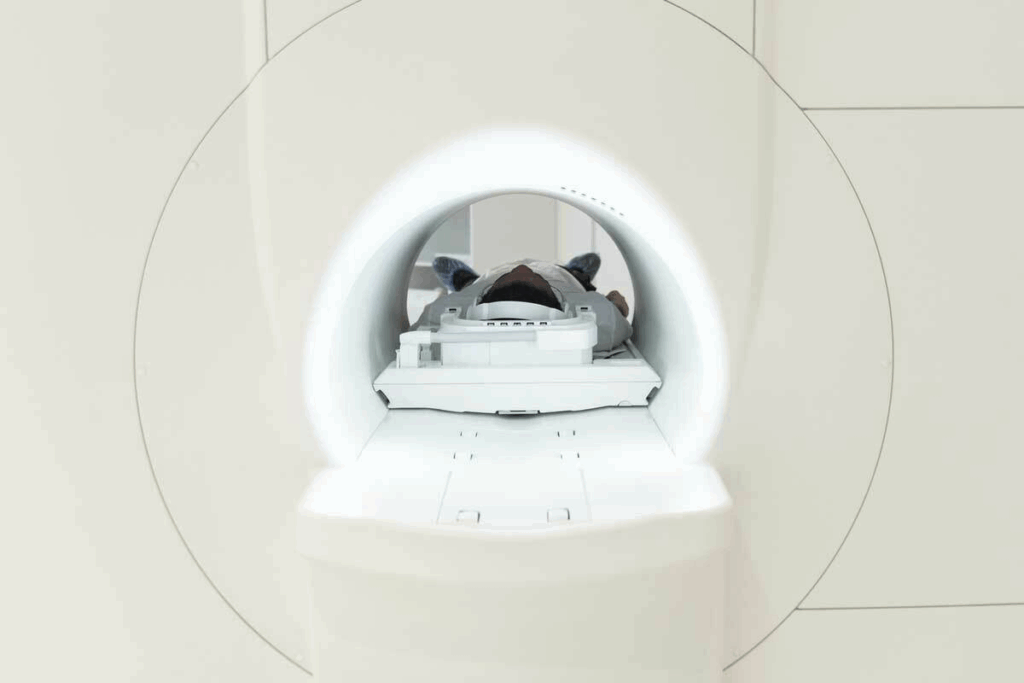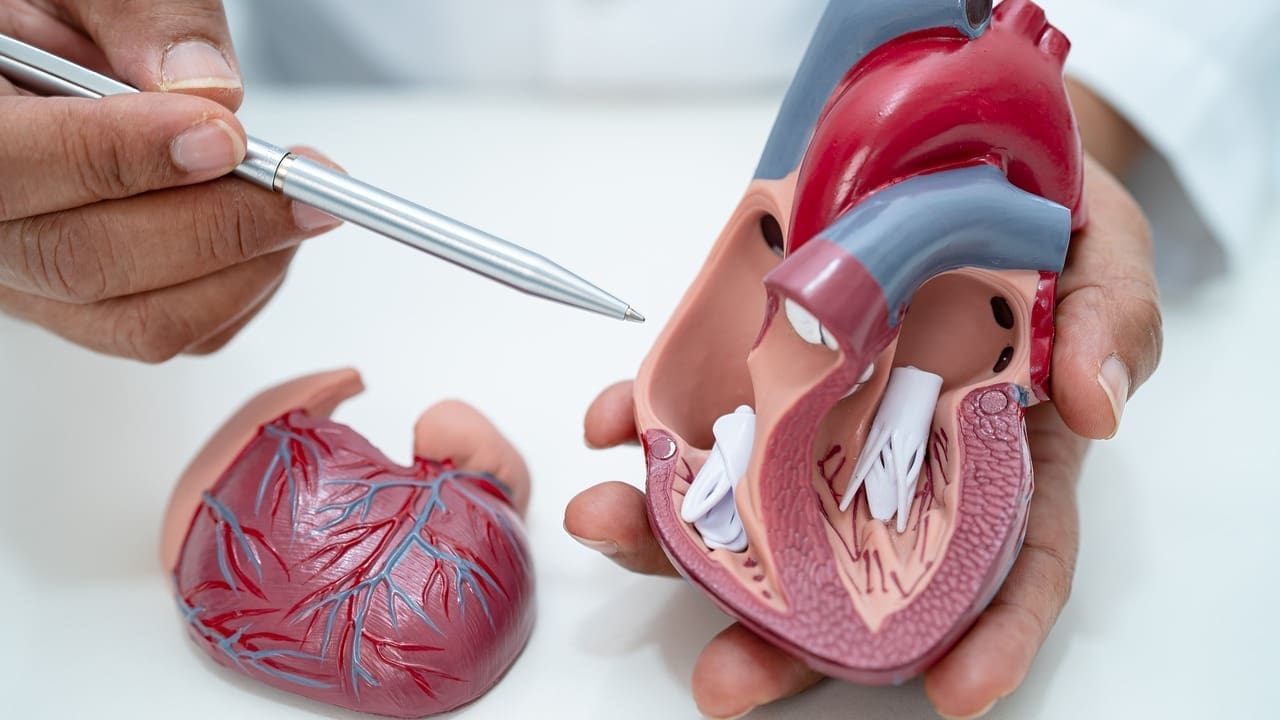Last Updated on November 27, 2025 by Bilal Hasdemir

At Liv Hospital, we use kidney imaging procedures to check how well the kidneys work and find any problems. A Lasix renal scan is a special test that looks at kidney function and how urine moves through the body.
These scans are usually safe, but they can cause some side effects. You might need to pee a lot, feel dizzy, get dehydrated, or have low blood pressure. Knowing about these side effects helps us make sure you have a safe and comfortable time.
We are dedicated to putting our patients first and following international standards. This means we do every kidney scan accurately and safely. We will share important facts about Lasix renal scans. This will help you know what to expect and how to get ready.
Key Takeaways
- Lasix renal scans are used to assess kidney function and urinary tract dynamics.
- Potential side effects include frequent urination, dizziness, dehydration, and low blood pressure.
- Our hospital follows international standards for safe and accurate kidney imaging procedures.
- Patient-centered care is our priority to ensure a smooth experience.
- Understanding the procedure and potential side effects is crucial for patient preparation.
What Is a Lasix Renal Scan and How Does It Work?

The Lasix renal scan is a special test in nuclear medicine. It checks how well the kidneys work. It helps find any problems with the kidneys.
Kidney tests like the Lasix scan are key for finding and treating kidney diseases. They show how the kidneys function and their structure.
Definition and Purpose of Kidney Imaging Tests
Kidney imaging tests help see the kidneys and check their function. Their main goal is to:
- Evaluate kidney function
- Identify structural abnormalities
- Diagnose kidney diseases
- Monitor the progression of kidney disease
These tests find problems like blockages, scars, or tumors in the kidneys. Knowing how the kidneys work helps doctors plan the best treatment.
The Role of Furosemide (Lasix) in Renal Scanning
Furosemide, known as Lasix, is key in the renal scan. It makes the kidneys produce more urine. This helps:
- Make kidney function clearer
- Get more accurate test results
- Check how well the kidneys drain
Furosemide increases urine flow. This helps doctors spot blockages or drainage problems. It’s important for diagnosing issues like hydronephrosis or kidney stones.
We mix a radioactive tracer with furosemide for a detailed kidney function check. This method helps us give accurate diagnoses and treatment plans for kidney problems.
The Science Behind Nuclear Medicine Kidney Scans

Nuclear medicine kidney scans use radioactive tracers to show how well the kidneys work. This tool is key for checking kidney health and spotting problems.
Radioactive Tracers Used in Renal Imaging
Nuclear medicine uses tiny amounts of radioactive materials to find and treat diseases. For kidney scans, special tracers are used. These tracers help us see how the kidneys work and look. Technetium-99m compounds are often used because they are safe and work well.
How Nuclear Medicine Visualizes Kidney Function
To see how the kidneys work, nuclear medicine uses a few steps. First, a tiny bit of radioactive tracer is given to the patient. Then, as it moves through the blood, the kidneys take it in. A camera picks up the radiation and makes detailed images.
These images help doctors understand kidney function. They can spot problems and decide the best treatment. A nuclear medicine scan for the kidneys gives doctors the information they need to care for patients better.
With renal imaging, we can see how the kidneys are doing. We can find damage or disease and check if treatments are working. This technology has made diagnosing and treating kidney problems much better.
Step-by-Step Kidney Scan Procedure Guide
Learning about the kidney scan procedure can make patients feel less anxious. We walk you through each step, from getting ready to after the scan. This ensures a smooth experience for you.
Pre-Scan Preparation Requirements
Before a kidney scan, there are certain steps to take. Drinking lots of water is key; it helps avoid side effects and makes the test more accurate.
- Arrive at least 30 minutes before the scan time.
- Tell your doctor about any medicines you’re taking.
- Take off any jewelry or metal that could get in the way of the scan.
A medical expert says, “Drinking enough water before a renal scan is vital for clear images and a good test result.”
“Drinking enough water helps the tracer move through your system, giving a clearer view of your kidney function.”
The Scanning Process Explained
A small amount of radioactive tracer is injected into your vein during the scan. It goes through your blood and into your kidneys, where it’s absorbed and then comes out. A special camera picks up the radiation from the tracer, making images of your kidneys.
The scanning takes about 30 minutes to an hour. You might be asked to lie still on a table while the camera moves around you, taking pictures from different angles.
| Step | Description | Duration |
| 1. Tracer Injection | Injection of radioactive tracer | 1-2 minutes |
| 2. Imaging | The camera captures images of the kidneys | 30 minutes |
| 3. Lasix Administration | Furosemide (Lasix) is administered to stimulate kidney function | 1-2 minutes |
Post-Scan Care Instructions
After the scan, you can usually go back to your normal routine. Keep drinking lots of water to help get rid of the tracer from your body.
Post-scan care tips:
- Drink at least 4-6 glasses of water in the 24 hours after the scan.
- Go to the bathroom often.
- Wash your hands well after using the restroom.
By following these tips, you can make sure the kidney scan goes well and reduce any side effects.
Common Lasix Renal Scan Side Effects: What to Expect
Knowing the common side effects of a Lasix renal scan helps patients get ready for their kidney imaging. Lasix renal scans are mostly safe, but some side effects can happen. These come from the furosemide (Lasix) and the radioactive tracer used. We’ll talk about the usual side effects of this test.
Urinary System Effects
The Lasix in the scan can make you pee more often, leading to frequent urination. This effect is usually short-lived and goes away once the Lasix is out of your system. Drinking plenty of water before and after helps your body handle the Lasix and the tracer better.
Cardiovascular Responses
Some people might feel dizziness or lightheadedness during or after the scan. This can happen because of blood pressure changes or dehydration. If you have heart problems, tell your doctor before the scan. They might suggest changing your meds or drinking more water to lessen these effects.
“It’s essential for patients to follow their healthcare provider’s instructions carefully to minimize potential side effects during and after the Lasix renal scan.”
Injection Site Reactions
Like any injection, there’s a chance of reaction at the injection site, like redness, swelling, or pain. These reactions are usually mild and go away in a few days. If the reaction doesn’t get better or gets worse, reach out to your doctor.
In summary, side effects from a Lasix renal scan can happen, but they’re usually mild and short-lived. Knowing what to expect helps patients prepare and manage any side effects. Common side effects include frequent urination, dizziness, and reactions at the injection site. Always follow your doctor’s advice to reduce these effects.
Rare but Serious Adverse Reactions
Lasix renal scans are usually safe, but there are rare serious side effects. These side effects are not common but can affect health a lot.
Allergic Responses to Radioactive Tracers
Some people might have allergic reactions to the radioactive tracers in nuclear medicine scans of the kidney. Symptoms can be mild or severe, like hives, itching, and trouble breathing. In the worst cases, anaphylaxis can happen, which is very dangerous and needs quick medical help.
Severe Dehydration Complications
Lasix, a diuretic, can cause dehydration if not managed properly. Severe dehydration can lead to electrolyte imbalances and low blood pressure. It’s important to drink plenty of water before, during, and after the scan to avoid this.
| Symptom | Description | Action |
| Dizziness | Feeling lightheaded or faint | Contact a healthcare provider |
| Severe Thirst | Increased thirst that doesn’t improve with hydration | Seek immediate medical attention |
| Reduced Urine Output | Not urinating as much as usual | Consult a healthcare provider |
When to Contact Your Healthcare Provider
If you have any unusual or severe symptoms after a Lasix renal scan, call your healthcare provider. Catching and treating side effects early can make a big difference.
Knowing the risks and taking steps to prevent them can help avoid serious side effects during a kidney nuclear medicine scan.
Radiation Safety: Facts About Nuclear Medicine Kidney Scans
When you get a nuclear medicine kidney scan, knowing about radiation safety is key. We get that you might worry about radiation. We aim to give you the facts to ease your mind.
Comparing Radiation Exposure to Daily Activities
Nuclear medicine kidney scans use tiny amounts of radioactive tracers. This lets doctors see how your kidneys work. The amount of radiation you get is very small.
Think of it this way:
- A scan gives you about the same radiation as the natural background over the years.
- It’s often less than other medical scans.
Safety Measures During the Procedure
We take many steps to keep you safe during a scan:
- We use just the right amount of tracer for clear images.
- You’re watched closely to keep you safe and get good results.
- Our team follows strict rules to protect everyone.
Long-term Safety Considerations
Even though scans are safe right away, we think about long-term safety too. The tracers used in scans break down fast. This means they leave your body quickly.
- Drink lots of water after the scan to help get rid of the tracer.
- Follow any special instructions from your healthcare team.
Knowing the facts about radiation safety helps you make smart choices about your health. We’re here to give you top-notch care and support every step of the way.
How to Minimize Lasix Renal Scan Side Effects
To lower the chance of problems, it’s key to know how to lessen Lasix renal scan side effects. A Lasix renal scan checks how well your kidneys work. It uses a special dye and Lasix. By following certain steps, you can cut down on side effects and recover better.
Optimal Hydration Strategies
Drinking enough water is very important before, during, and after the scan. Drink lots of water to get rid of the dye and avoid dehydration. We suggest drinking 8-10 glasses of water in the 24 hours after the scan. Also, stay away from caffeinated drinks and alcohol, as they can make dehydration worse.
A study on the National Center for Biotechnology Information website says drinking enough water is key for your kidneys to work properly and to avoid kidney damage.
Medication Adjustments and Considerations
Tell your doctor about all the medicines you’re taking. Some might need to be changed or stopped before the scan. Some medicines, like diuretics, can react with Lasix and cause more side effects. We’ll help you manage your medicines to avoid problems.
Recovery Tips for Common Side Effects
Some people might feel dizzy, have a headache, or feel sick after the scan. To feel better, rest and don’t do too much for the rest of the day. You can take over-the-counter pain relievers like acetaminophen for headaches or pain.
By following these tips and staying informed, you can reduce side effects from a Lasix renal scan. This will help you have a good experience with the test.
Special Patient Populations and Considerations
Lasix renal scans need special care for different patients. Age and health conditions play big roles. We make sure the scan is safe and works well for everyone.
Pediatric Renal Scan Modifications
Kids need special attention for Lasix scans because of their size and growing bodies. We use the right amount of tracer and Lasix. This helps keep them safe while getting the needed info.
Elderly Patients: Additional Precautions
Older patients might have health issues that affect the scan. We watch their kidneys closely. We also adjust the scan to avoid dehydration and other problems.
Pregnancy and Breastfeeding Considerations
We think carefully about pregnant or breastfeeding women. We look for safer options. We also try to use less radiation.
Patients with Existing Kidney Conditions
People with kidney problems need special care during scans. We tailor the scan to fit their needs. This way, we get the most info without risks.
| Patient Group | Special Considerations |
| Pediatric | Adjusted tracer and Lasix dosage |
| Elderly | Monitoring for comorbidities, hydration status |
| Pregnant/Breastfeeding | Alternative methods considered, minimizing radiation exposure |
| Kidney Conditions | Adjusted protocol to accommodate existing conditions |
Conclusion: Weighing Benefits Against Risks in Kidney Imaging
We’ve looked into Lasix renal scans and kidney imaging. We’ve seen their good sides and possible downsides. Kidney scans are key in finding and treating kidney problems.
The good news is that kidney scans usually help more than they harm. They give doctors the info they need to make treatment plans. Lasix scans might have some side effects and a bit of radiation, but these are usually short-term and minor.
Patients can make better choices when they know about the scans and their risks. Doctors also have a big part to play in keeping patients safe during these tests.
To wrap it up, kidney scans are a big help in taking care of patients. We need to keep looking at the good and the bad. This way, we make sure patients get the best care possible.
FAQ
What is a Lasix renal scan, and how does it work?
A Lasix renal scan is a test that uses a special dye and furosemide (Lasix) to see how the kidneys work. It helps doctors find kidney problems.
What are the common side effects of a Lasix renal scan?
Side effects include needing to pee a lot, feeling dizzy, being dehydrated, and reactions at the injection site. These are usually mild and go away quickly.
How can I minimize side effects during a Lasix renal scan?
To reduce side effects, drink lots of water before and after the scan. Also, follow your doctor’s advice on any medication changes and other steps to prepare.
Are there any serious adverse reactions associated with Lasix renal scans?
Yes, rare but serious problems can happen, like allergic reactions to the dye or severe dehydration. If you have severe symptoms, call your doctor right away.
How much radiation exposure is involved in a nuclear medicine kidney scan?
Nuclear medicine kidney scans use very little radiation, similar to or a bit more than what we get daily from background radiation. Many safety steps are taken to lower risks.
Can I undergo a Lasix renal scan if I have existing kidney conditions?
If you have kidney problems, you might need special care. Tell your doctor about your condition. They will tell you what precautions and changes you need.
Is it safe to undergo a Lasix renal scan during pregnancy or breastfeeding?
Pregnancy and breastfeeding are important to consider. If you’re pregnant or breastfeeding, tell your doctor. They will weigh the risks and benefits of the scan for you.
How does the Lasix renal scan procedure differ for pediatric patients?
Kids might need different doses of the dye and furosemide for the scan. There are special pediatric protocols to make sure the scan is safe and works well for them.
What are the benefits of kidney imaging tests like Lasix renal scans?
Kidney imaging tests give doctors important information. They help find and manage kidney problems. The benefits usually outweigh the risks, helping guide treatment and improve health outcomes.
How long does it take to recover from a Lasix renal scan?
Recovery from a Lasix renal scan is usually fast. Drink plenty of water and follow your doctor’s instructions after the scan. This will help manage any side effects and ensure a quick recovery.
References
- Wang, Y., et al. (2018). Safety of administering furosemide during nuclear diuretic renography. American Journal of Roentgenology, 210(2), 432-436. https://www.ajronline.org/doi/10.2214/AJR.17.18801
- Banker, H. (2023). Nuclear renal scan. In StatPearls. https://www.ncbi.nlm.nih.gov/books/NBK562236/






